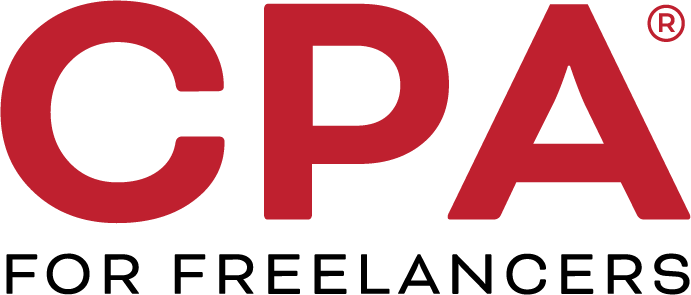Although no significant tax legislation was enacted in 2023, there were changes from 2022 tax legislation that will have an impact on 2023 tax returns as well as changes being announced for 2024. Here’s a quick run down to help you be prepared for the coming tax season and new year ahead.
- The Inflation Reduction Act provided new or enhanced tax credits and deductions for individuals and businesses. For individuals, the two tax credits for energy-efficient home improvements were enhanced and extended.
- The expanded Clean Vehicle Credit and new Previously Owned Clean Vehicle Credit mean that more types of used clean vehicles may qualify for that previously owned credit than qualify for the new vehicle credit. Changes to the Alternative Fuel Vehicle Refueling Property Credit limiting the credit to rural and lower-income areas may reduce the availability of that credit for many households.
- There are 16 new or expanded clean energy credits and deductions for businesses which represent the most significant tax breaks made available for clean energy to date. The credits are increasingly tied to the resulting clean energy produced, rather than the particular source of the clean energy.
- There are also prevailing wage and apprenticeship requirements apply for obtaining the maximum amount for many of the clean energy tax breaks. Many of the credits in the future can be transferred to an entity better able to utilize the credits, and nontaxable entities such as not-for-profits, tribal entities and government entities may qualify for elective payments rather than a credit.
- SECURE 2.0, enacted as part of the year-end Appropriations Act in December 2022, made many changes to tax-advantaged retirement plans, including extending the age for required minimum distributions to age 73 for 2023 and reducing the penalties for failure to make required minimum distributions.
- The Internal Revenue Service recently announced significant changes to the amount individuals can contribute to their 401(k) plans in 2024. The key changes to retirement contribution thresholds for 2024 include:
-
- The contribution limit for employees who participate in 401(k), 403(b), most 457 plans, and the federal government’s Thrift Savings Plan is increased to $23,000, up from $22,500 in 2023. The SEP-IRA contribution limit is always the same as the annual additions limit for a 401k plan. It is $66,000 in 2023, and it will increase to $69,000 in 2024.
- The limit on annual contributions to an IRA increased to $7,000 in 2024, up from $6,500 in 2023. The IRA catch up contribution limit for individuals aged 50 and over is not subject to an annual cost of living adjustment and remains $1,000.
- The catch-up contribution limit for employees aged 50 and over who participate in 401(k), 403(b), most 457 plans, and the federal government’s Thrift Savings Plan is increased to $7,000, up from $6,500. Therefore, participants in 401(k), 403(b), most 457 plans, and the federal government’s Thrift Savings Plan who are 50 and older can contribute up to $30,000, starting in 2024. The catch-up contribution limit for employees aged 50 and over who participate in SIMPLE plans is increased to $3,500, up from $3,000.
- Taxpayers can deduct contributions to a traditional IRA if they meet certain conditions. If during the year either the taxpayer or the taxpayer’s spouse was covered by a retirement plan at work, the deduction may be reduced, or phased out, until it is eliminated, depending on filing status and income. (If neither the taxpayer nor the spouse is covered by a retirement plan at work, the phase-outs of the deduction do not apply.)
If during the year either the taxpayer or the taxpayer’s spouse was covered by a retirement plan at work, the deduction may be reduced, or phased out, until it is eliminated, depending on filing status and income. (If neither the taxpayer nor the spouse is covered by a retirement plan at work, the phase-outs of the deduction do not apply.) The phase out ranges for 2024 are as follows:
- For single taxpayers covered by a workplace retirement plan, the phase-out range is increased to between $77,000 and $87,000 [up from between $73,000 and $83,000].
- For married couples filing jointly, if the spouse making the IRA contribution is covered by a workplace retirement plan, the phase-out range is increased to between $123,000 and $143,000 [up from between $116,000 and $136,000].
- For an IRA contributor who is not covered by a workplace retirement plan and is married to someone who is covered, the phase-out range is increased to between $230,000 and $240,000 [up from between $218,000 and $228,000].
- For a married individual filing a separate return who is covered by a workplace retirement plan, the phase-out range is not subject to an annual cost-of-living adjustment and remains between $0 and $10,000.
- The income phase-out range for taxpayers making contributions to a Roth IRA is increased to between $146,000 and $161,000 for singles and heads of household [up from between $138,000 and $153,000].
- For married couples filing jointly, the income phase-out range is increased to between $230,000 and $240,000 [up from between $218,000 and $228,000]. The phase-out range for a married individual filing a separate return who makes contributions to a Roth IRA is not subject to an annual cost-of-living adjustment and remains between $0 and $10,000.
- The income limits for the Saver’s Credit (also known as the Retirement Savings Contributions Credit) for low- and moderate-income workers are:
- $76,500 for married couples filing jointly [up from $73,000]
- $57,375 for heads of household [up from $54,750]
- $38,250 for singles and married individuals filing separately [up from $36,500]
- The amount individuals can contribute to their SIMPLE retirement accounts is increased to $16,000 [up from $15,500].
Now is the time to look at year-end tax planning to see which of the above and other tax savings might be available to you. In addition, you can also ahead toward retirement planning so you can take advantage of both tax savings for 2023 and look ahead to maximizing savings for 2024. This will not only provide certain tax advantages, but it will also ensure that one day you have a comfortable retirement!
Remember to touch base with a qualified tax professional who can guide you appropriately in regard to these changes in relation to your specific tax situation.
Jonathan Medows is a NYC-based CPA who specializes in taxes for consultants across the country. His website has a resource section with how-to articles and information for freelancers. https://www.cpaforfreelancers.com/


